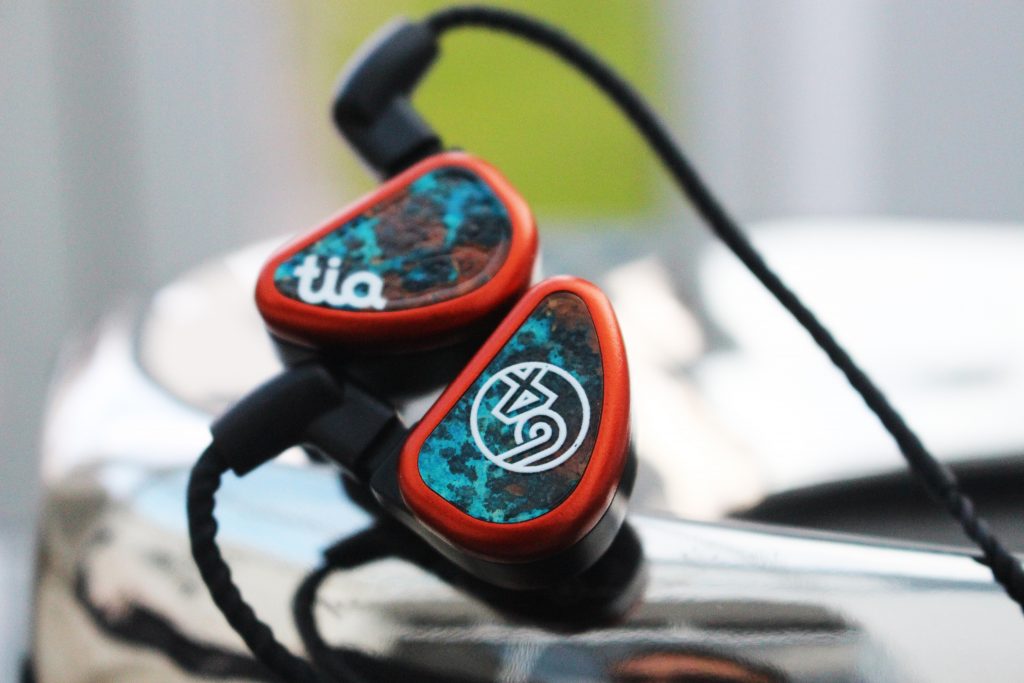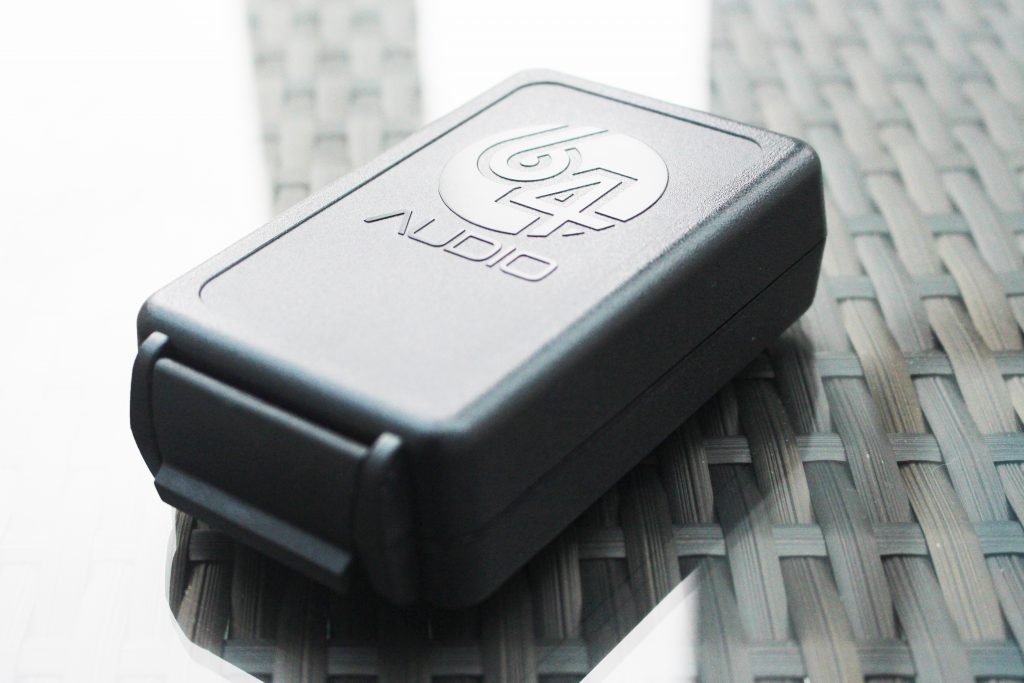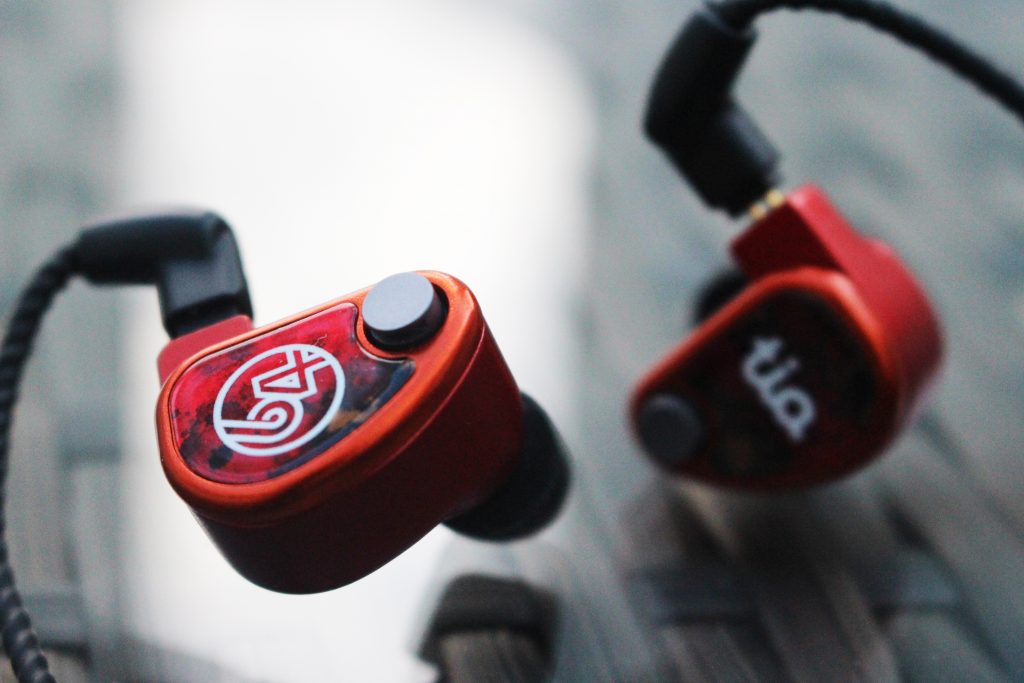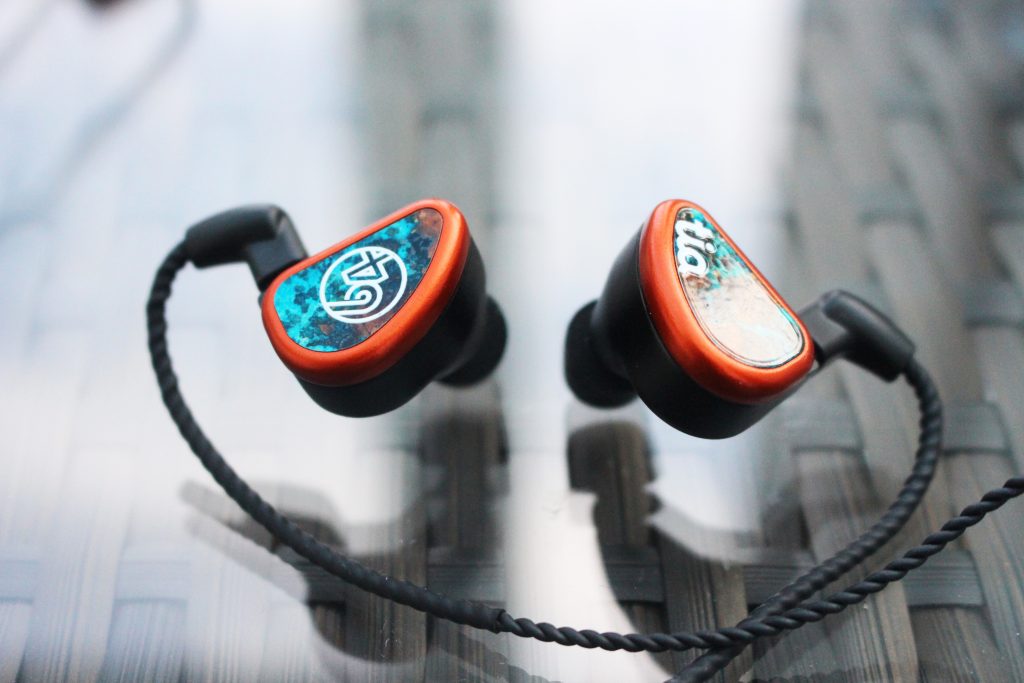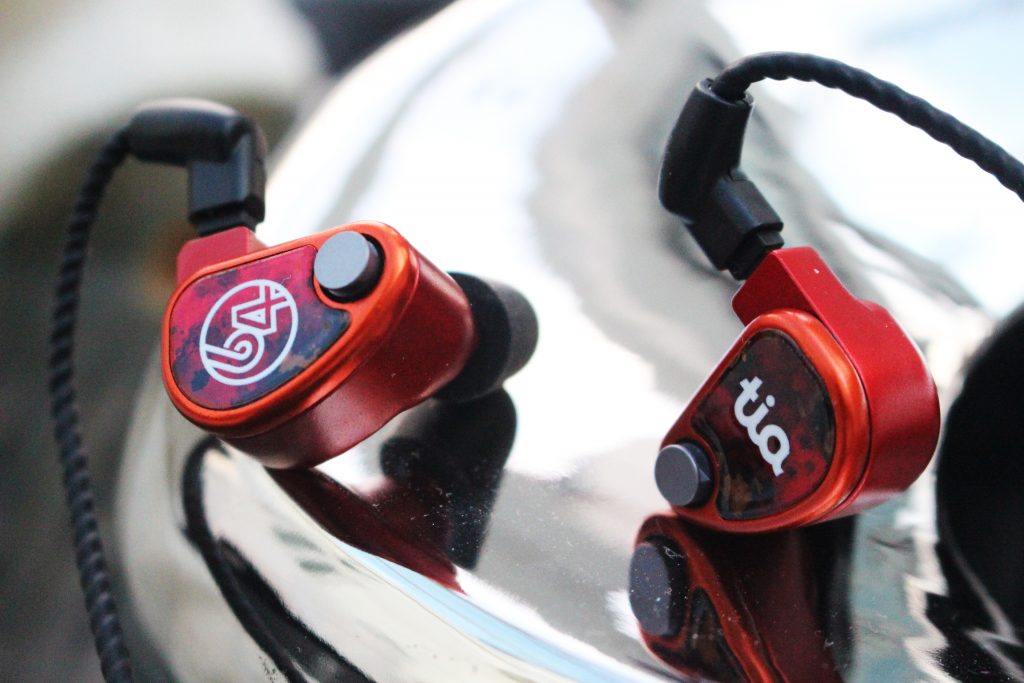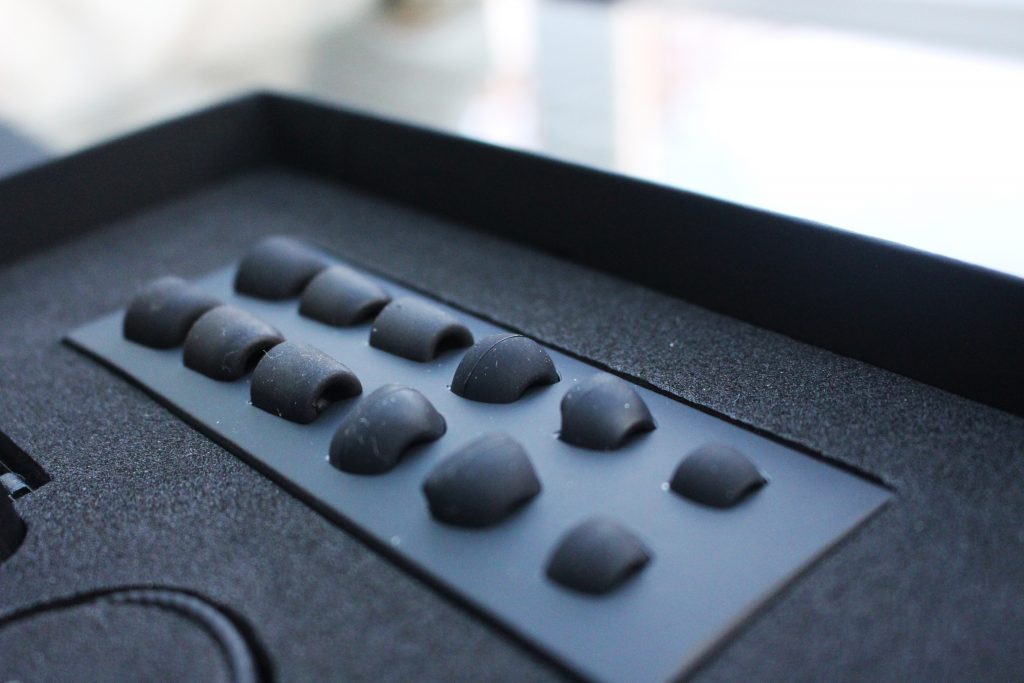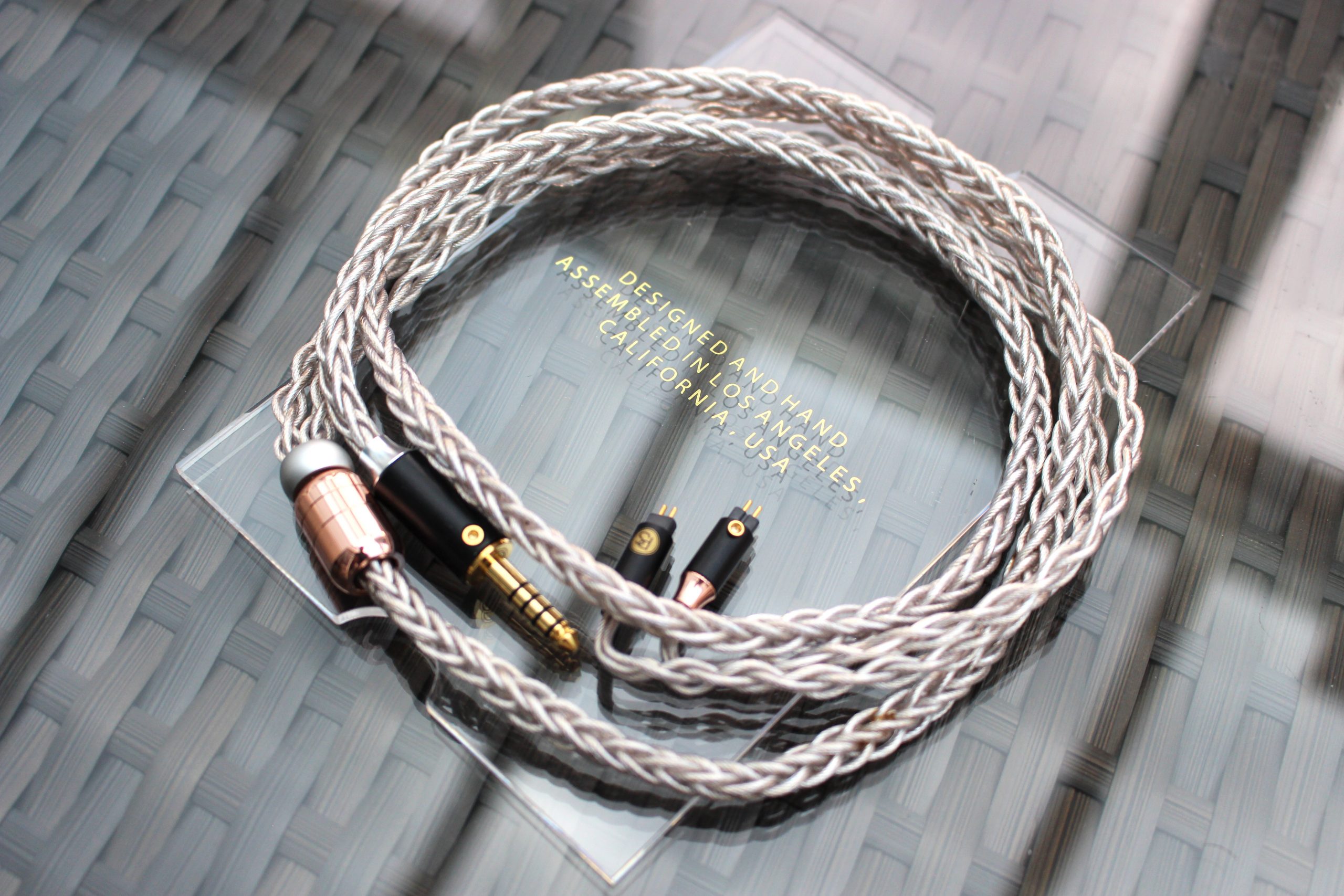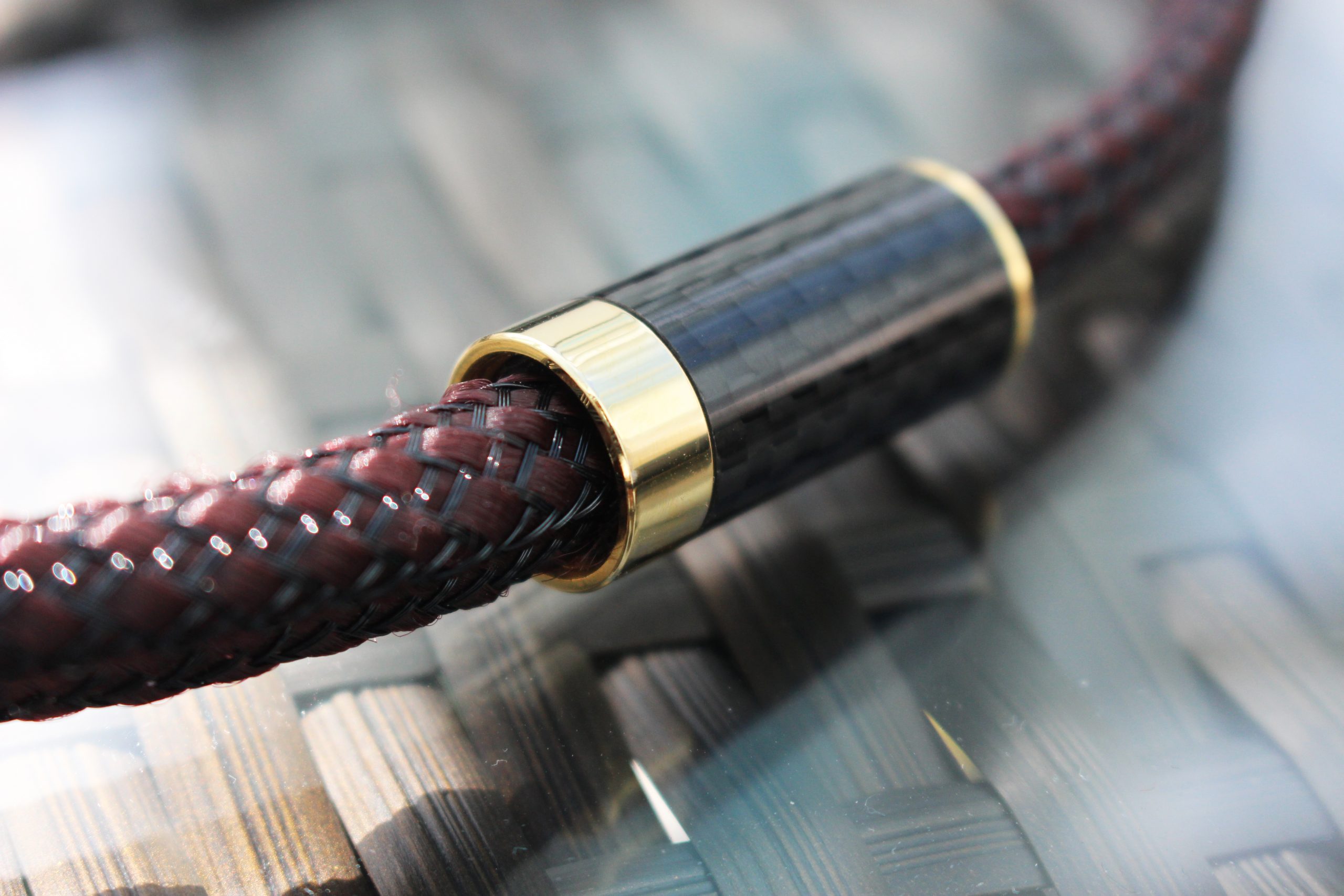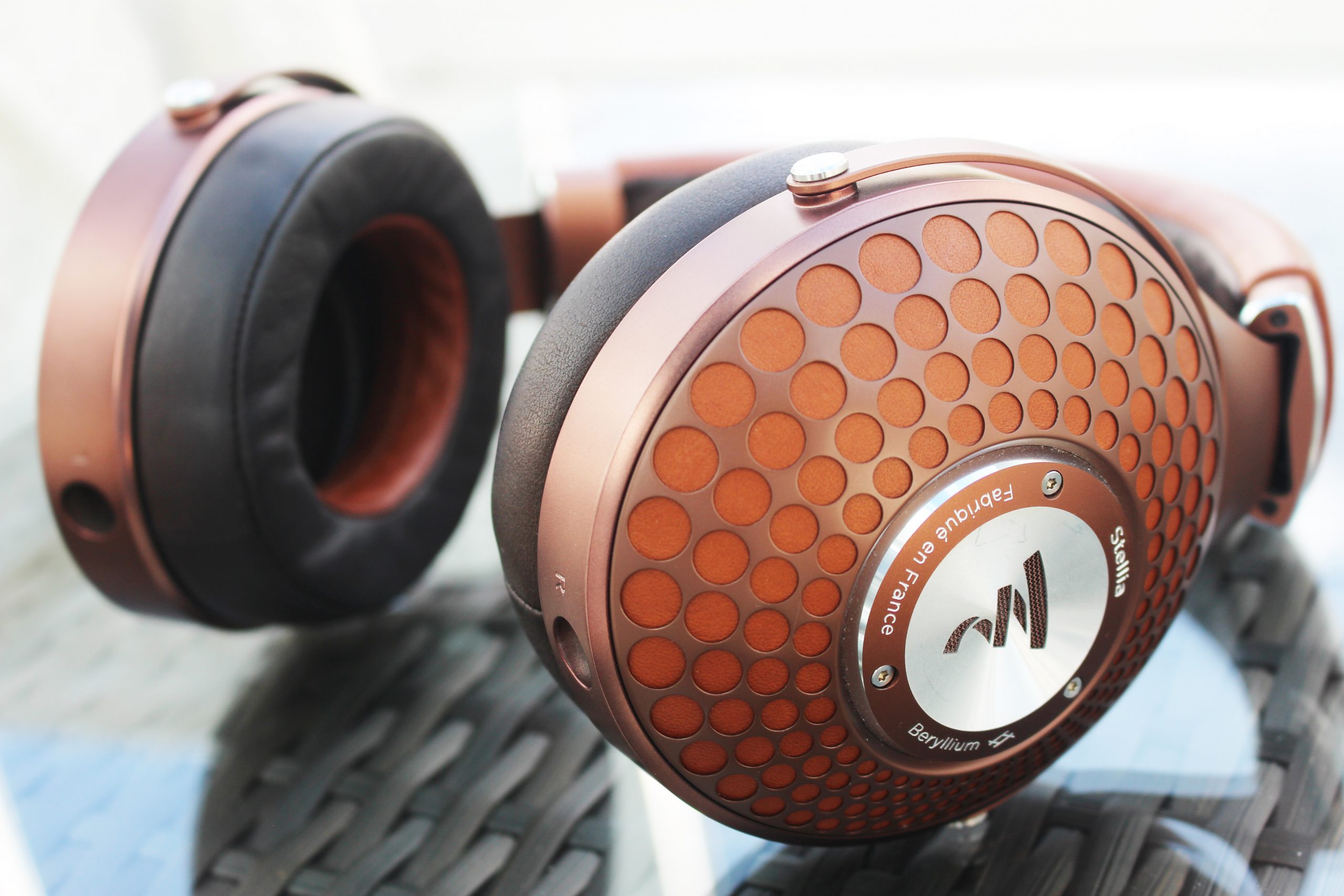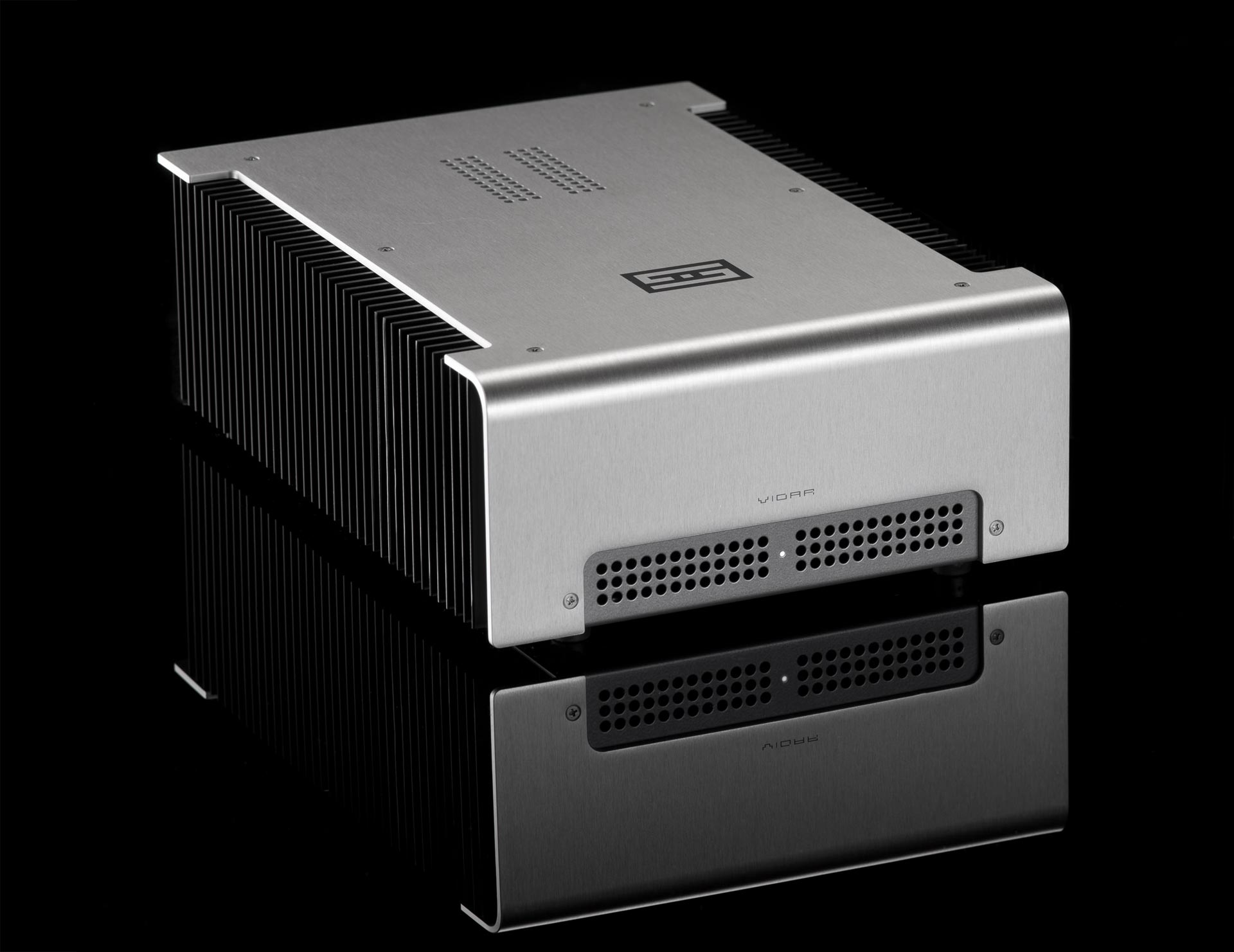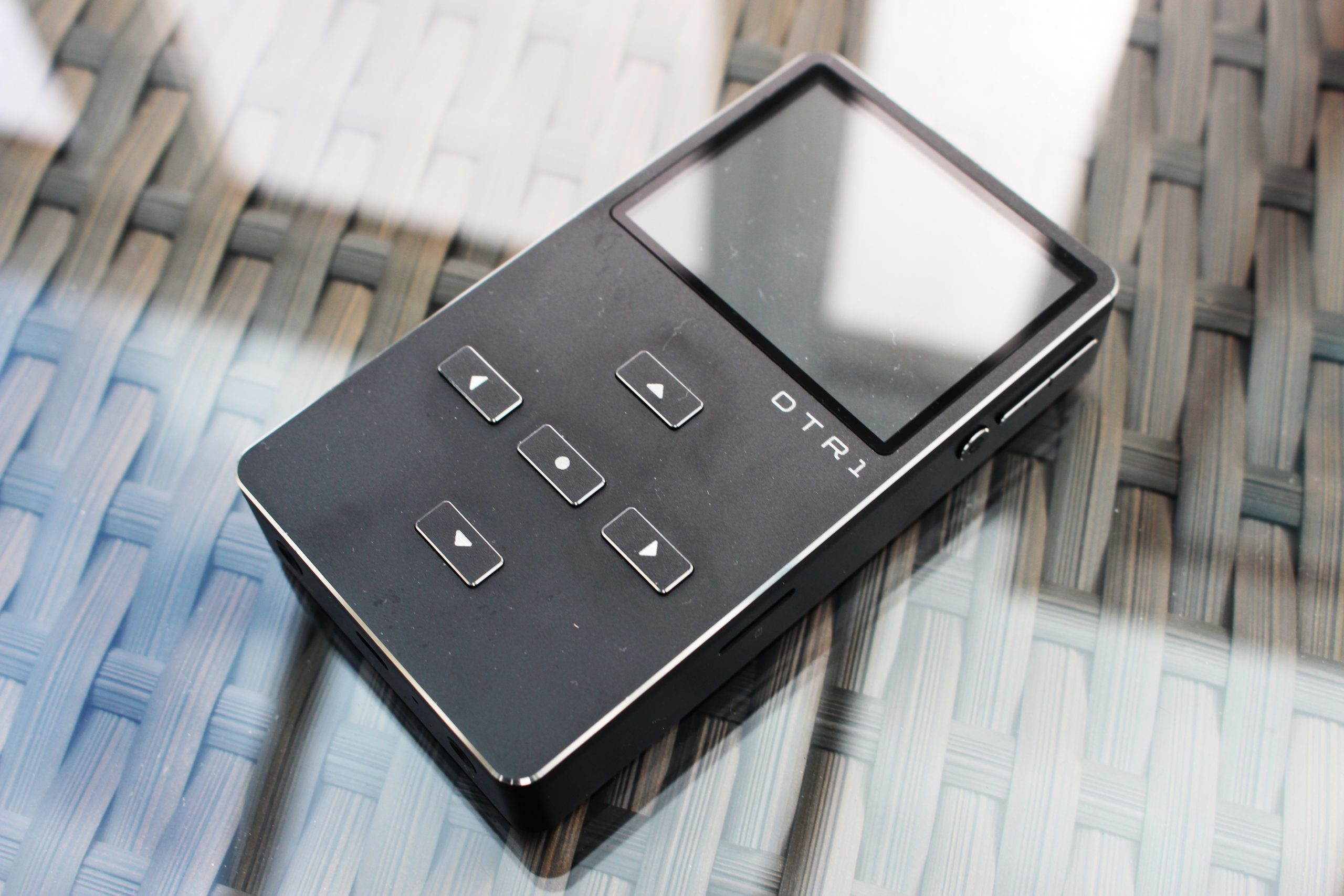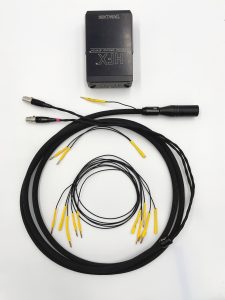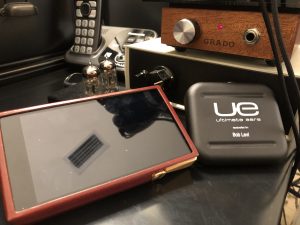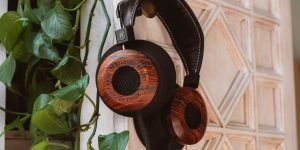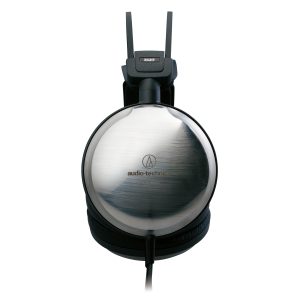With just a decade of experience, 64 Audio have quickly grown to become a tour de force in the world of portable audio. Part of their ascension has stemmed from their firm desire to challenge traditional audio standards with innovations and ground-breaking technologies.
The pinnacle of their knowledge has culminated in the Tubeless In-Ear Audio (tia) technology that comprises open balanced armatures within acoustic chambers, and a single bore design to give incredible levels of transparency and resolution. With this in mind, the company have learned the power of implementation rather than sheer driver count alone. The Tia Fourté, a combination of the word "four" and "forte," are 64 Audio's flagship IEM and the first to incorporate a blend of the "tia" technology with their "Apex" pressure-relief technology. The marriage of these features has allowed the four-driver hybrid to stand strong to this day, just shy of three years from their initial launch. Priced at $3599, however, the Fourté are for those without a budget in mind and looking for the upper echelons of what high-end fidelity can offer.
This review shall be focusing on the Fourté along with 64 Audio's U18t, a more reference IEM which also takes full advantage of both the "tia" and "Apex" technologies. Where the Fourté incorporates a hybrid monitor, the U18t makes use of multi balanced-armature design and retails for $2999.
The Box & Accessories
While 64 Audio have stepped up their retail packaging since I last reviewed their U12 monitors, there is still room for improvement given the expensive nature of their products. The packaging itself is minimalist, a slide out box with a professional photo of the IEMs themselves along with the 64 Audio logo and "Made in the USA" badge.
Inside is a black cardboard box that opens to reveal a tray insert of six eartips (three foam and three silicone of varying sizes), the earphones themselves, and a pedestrian travel case. The case houses a cleaning tool, dehumidifier and shirt clip. Included in the U18t IEMs are the Apex M20 and M15 modules that allow interchangeability, whereas the Fourté's have them permanently fitted in.
The Design & Build
The Tia Fourté adopts a rather avant-garde casing with its two-piece aluminum suit. The faceplate is unique, and supports a copper-patina design that is said to be unique for each in-ear monitor. The U18t, on the other hand, encompasses more orange / red overtones while still supporting a distinctive copper-patinated inlay. One key difference is that while the Tia Fourté has the Apex module built into the shell, the U18t has one that rests in a groove on the faceplate allowing for interchangeability.
Both monitors feature the 64 Audio moniker on one faceplate with "tia" branded on the other. Despite the technology packed in, both housings are relatively compact, which definitely aids in the ergonomics department. The nozzle is angled and more shallow than other manufacturers, which allows the drivers to sit closer to the canal for pure unadulterated sound. Both the Fourté and U18t adopt a regular 2-pin connection with flush sockets connected by memory cable wiring.
The Fit & Isolation
Owing to the relatively compact housings compared to some other universal monitors, and even customs for that matter, both the U18t and Fourté offer superior levels of comfort. This is helped by the provided foam tips that allow the monitors to disappear from mind during extended listening sessions.
Isolation levels, as a result of the inherent design, are only moderately above average at best. This can be improved by achieving a deeper fit with double and triple-flanged tips.
The Technology
Tia
The Tubeless In-Ear Audio technology comprises three elements: open balanced-armature drivers, a single-bore design, and acoustic chambers. Each component works in tandem to deliver unadulterated sound without being perturbed by unwanted resonances. This, coupled with the placement of the drivers in the acoustic chambers, delivers an unmatched three-dimensional sound that has an extremely short sound audio path to the ear canal. The result being outstanding high-frequency extension and clarity.
Apex
The Apex or "Air Pressure Exchange" technology features a vent designed to alleviate pneumatic pressures in the ear canal over time. Traditional topologies allow air to become trapped, causing the eardrum to work excessively resulting in ear fatigue. With the modules, the interactive vent relieves some of these built in pressures, which naturally opens the soundstage while simultaneously allowing for a comfortably longer listen. The modules feature multi-cell studio-grade TPE material, and is built in 64 Audio's very own labs, which allow the company greater control and more consistent results from vertical integration.
Sound impressions
Tia Fourté
From initial listening, the sound is incredibly impressive. The Fourté is able to resolve and emit an orchestra of sound like no other. The separation, detail, attack along with the larger than life sound and undercurrents of the dynamic driver bass, consolidate its TOTL status immediately.
The Bass
The single dynamic driver of the Fourté outputs bass that extends deep in sub-bass territories while providing capably authoritative and analogue bass. One thing to note about this bass is that it can be felt as well as heard, which not many monitors can boast about. The rounded punches of the bass help work some warmth into the lower midrange, which balances the hyper-resolving nature of these IEMs. Having said that, the bass is not the fastest and, in that sense, the U18t's low-end possesses more responsive decay owing to its balanced-armature design. While the U18t can be considered as a linear and more balanced sounding monitor, the Fourté utilizes its sub-bass bias to generate a more unique signature adding a musical slant to an already extremely transparent signature. Characteristics wise, the Fourté's bass is very textured, with a gently upward sloping sub-bass that dials back slightly into the mid-bass region. Particularly impressive, as with many of 64 Audio's models, is the note size which contributes to a more immersive listening experience.
The Mids
The midrange of the Tia Fourté instills a neutral affair while remaining detailed, linear and encompassing. Although there are great levels of clarity, the signature avoids sounding sterile or cold, and particularly in the lower midrange there is even some slight warmth that makes tracks sound organic. The overall midrange follows a mild u-shaped imposition that allows it to have an extraordinarily large sound stage. As with the bass, note size is particularly large, providing tracks with a grand and intelligible sound. Next to the Tia Trio, the midrange of the Fourté is less rich in presentation, but comparatively demonstrates a higher degree of transparency and resolve. Instrument separation here is nothing short of world-class, and is the best I have ever experienced from any in-ear monitor, even rivaling that of full-sized headphones. Sounds seem to emanate from different origins within the soundscape which outputs a captivating experience. Compared to the U18t, the Fourté's midrange are pulled slightly further back in the mix, and opts for more contrast to the bass than the U18t's linearly extended presentation. The two top-end models from 64 Audio do share similar characteristics, especially where micro-detailing and attack are concerned. The Tia Fourté, however, accentuates upon this characteristic with the incorporation of its tia mid-driver.
The Treble
The treble is one of Tia Fourté's champion points, but for some may represent its Achilles heels. Paired right, the treble produces some of the most transparent and detailed sound I have ever heard from any in-ear monitor, without sounding forward or brash. While not strictly natural, there are incredible levels of sparkle, extension and air, which gives the presentation some added height. Tips also play a part in the synergy with the included foam tips attenuating some of the highs for a more palatable listen. Micro-dynamism, snap and pace, however, are not spared and this is a recurrent theme in the Fourté; a constant reminder of its sonic capabilities. Compared to the Tia Trio, the Fourté extends higher, and has more detailing. This also plays true for the Noble Katana—an already treble-proficient IEM—which next to the Fourté loses out on a bit of air and detail.
The Soundstage & Imaging
The Tia Fourté boasts one of the largest soundstages ever from an in-ear monitor. This is helped by its top-tier imaging and separation that produces sounds originating from different spots within the expansive soundscape. The Apex technology, as well as the two tia drivers, work in tandem here to create this compelling and striking signature.
U18 Tzar
Overall, the U18t is 64 Audio's more tonally balanced and linear monitor, with reference-like tuning. Like the Fourté, it outputs outstanding levels of micro-detailing, intelligibility and air to give it that signature top-end sound.
The Bass
With eight drivers just to support its lower frequencies, the U18t capitalizes on high-quality bass that extends low and slams fast. Next to the Tia Fourté, it sounds snappier and less analogue pertaining to its more neutral sound. Where the Fourté has a slight sub-bass emphasis, the U18t opts for a slight mid-bass bias. This can be altered with the two Apex modules. With the m20, the sub-bass develops greater impact and body that introduces a warmer tilt to the reference sound. With the m15 module, however, the U18t strives closer to a more linear sound with less of a sub-bass rumble and elevated mid-bass. While the U18t demonstrates faster decay in its bottom-end, the Tia Fourté possesses better texturing despite more bloom.
The Mids
The midrange of the U18t is airy, neutral and detailed—three defining characteristics that both it and the Fourté possess. Though there are remarkable levels of clarity, it easily escapes a cold and sterile sound. Sense of space here is excellent and there are great levels of layering between vocals and instruments. Since the midrange is closer in the overall mix, the U18t offers a slightly more intimate presentation compared to the Fourté (note that this is relatively speaking, as the U18t alone offers outstanding sound staging). This allows vocals to possess more weight and even more resolve in the lower midrange since bass authority and bloom is now more subdued. Again, compared to the Trio, vocals are less rich, but more transparent and intelligible. With the m15 module, the U18t leans closer to the Fourté's midrange, whereas the m20 introduces more body and smoothness to the overall signature.
The Treble
With the tia driver, the treble of the U18t is extensive, detailed with perceptively fast leading transients. As with the Fourté, there is great sense of space and layering to tracks. Cymbals and snare drums possess great energy, albeit slightly more subdued with the U18t. This is owing to a carefully crafted dip in the lower treble region, followed by a decisively elevated upper treble providing necessary detailing and liveliness to illustrate an engaging tuning.
The Soundstage & Imaging
The U18t provide an excellent soundstage, throwing sonic cues in the dimensions of width, depth and height. Though the U18t is not as grand sounding as the Fourté, there is still outstanding levels of detailing, separation and air to provide a world-class tuning.
Comparators
Campfire Audio Atlas
Both the U18t and Fourté trounce the Atlas in detailing, separation and resolution. They provide more air and a holographic sound that results in a capably more immersive listen. However, the Atlas does provide explosive bass with more authority and slam.
Campfire Audio Solaris
All three monitors here are top tier. The Fourté and U18t again display better detailing, resolution and separation especially in the upper frequencies. However, the midrange of the Solaris provides a more engaging, albeit more intimate listening experience. Sub-bass is greater on the Fourté compared to both Solaris and U18t, while the latter two demonstrate more a neutral delineation of sound.
64 Audio Tia Trio
The younger sibling here in the 64 Audio family puts up a fight with its rich and smoother midrange section. However, the resulting sound is more intimate with less air compared to both the U18t and Fourté. Those who prefer a more natural and affable timbre will lean towards the Trio, however those who crave soundstage, detail, and clarity will gravitate towards the U18t/Fourté tuning.
Noble Audio Katana
The Katana is a treble-fiend, possessing a light and airy signature amongst a background of a smooth low-end to midrange frequencies. However, again both the U18t and Fourté just resolve better, with more clarity and more air. Only the Fourté bests the Katana's soundstage width, while the Katana sounds grander than the U18t's in both of height and width.
Rock-it Sounds R50
Some may wonder about the inclusion of this $120 IEM in the comparison stream. While both the U18t and Fourté decisively best the R50s in soundstage, bass, texturing, note size, immersion and overall technicalities, the R50s share the upper-end IEMs' instrument separation and sense of pace (albeit on a smaller scale). The lower treble portion of the R50s still retain their magic after all these years and are not easily beaten by the grand titans in the aspects of tonality and extension.
DAP Pairing
Fiio M11 Pro Digital Audio Player
The M11 Pro offers a neutral presentation of sound, with good levels of detail and upper treble. However, the mid-forward presentation and more forward upper tones do restrict what the 64 Audio models are capable of.
Lotoo PAW 6000
The PAW 6000 is a remarkable DAP that allow in-ear monitors to shine as they were intended without imposing coloration. Both the U18t and Fourté pairing is incredible here with great sense of space, good body, and detailing while retaining some smoothness and depth. Parametric EQ settings are excellent here, and allow users to fine-tweak frequencies towards their natural preferences.
Cayin N8
The Cayin N8 represents their flagship DAP, with a flagship price to match. With the tube mode output, there is some even harmonic distortion, which adds a more euphonic and holographic touch to the already capable U18t/Fourté. Though transients become slightly softened, there still is outstanding resolution and pace that synergizes well with these higher-end 64 Audio models.
Aftermarket Cables
The Leonidas II cable by Effect Audio is an incredibly well-made 4-wire composition of palladium-plated silver and silver litz comparison which retails for $888. Compared to the stock premium cable supplied, the Leonidas II improves transparency and micro-detail retrieval across the spectrum. Particularly impressive is the well-controlled bass and improved layering which adds to the already holographic presentation of the Fourté. For those that want to equip the Tia Fourté with a boost in clarity, well-resolving bass and organic midrange presence, the Leonidas II capably offers and more.
Conclusion
It is not often that in-ear monitors impress me to the extent which the Tia Fourté and U18t have. With pioneering technologies, these monitors are really in a league of their own with an ultra-resolving, clean and engaging sound. The two, however, differ in their sound philosophies, with the U18t adopting a linear and more coherent representation of sound while the Fourté embarks on a craft-fully tuned 'fun' yet resolving venture. It is clear to see, though, that the U18t emulates the Fourté where detailing, separation and air are concerned. This is particularly surprising, as the former houses 18 balanced-armature drivers, while the latter just four. Likely contributory are the tia drivers in both models that portray unfiltered and pure resolving tones. The inclusion of the different Apex modules are a nice and welcomed addition allowing users to fine tune the U18t towards their preferred signature. Perhaps the inclusion of this in the Tia Fourté would not have gone amiss either. At $3599 and $2999, respectively, both models represent staggering investments, but undoubtedly ones which would serve an audiophile well in their personal audio journeys (figuratively and literally speaking). Hence, it will be undeniably interesting to see what the company has next up its sleeves…
64 Audio U18t
Retail: $2999
64 Audio Tia Fourté
Retail: $3599
64 Audio




